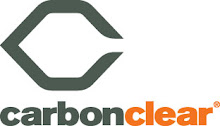
Tackling climate change requires large reductions in worldwide greenhouse gas emissions. The popular idea is that reducing emissions to the extent required - sixty percent or more - will be so painful and difficult that we need to phase the changes in gradually over the next four or five decades.
But is this true? Do we really have to wait until 2050 to get to a low-carbon economy?
In my last blog post we discussed the idea of "climate wedges" - a range of modest measures that rely on existing technology. Taken together these small "wedges" can cut society's carbon footprint by a massive amount.
It doesn't have to take long. When an avalanche near Juneau, Alaska in April destroyed the city's main electricity transmission lines, the utility switched to expensive backup generators. Residents' utility bills soared 400% and the switch began immediately.
The local library realised there was no need to keep to elevators (lifts) running, and took one out of service. The local hardware store quickly ran out of clothes pins as people abandoned their clothes dryers in favour of line-drying their laundry - even though it rains over 200 days per year. Households replaced every incandescent bulb they could with low-energy compact fluorescents. For show-and-tell, schoolchildren give presentations about how much energy they are saving at home.
The city of Juneau, Alaska cut its electricity consumption by more tha 30% in just a few weeks.
Weeks, not years. With existing technology and no earth-shattering lifestyle changes.
The residents of Juneau are no different from anyone else. If they - and we - can achieve this type of carbon reduction in less than a month, imagine what we can do in forty years.

